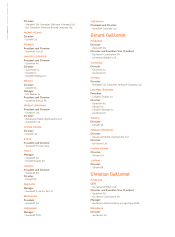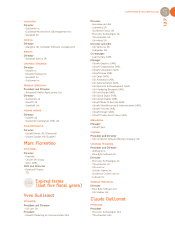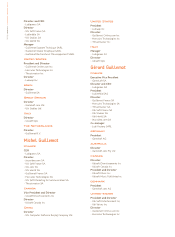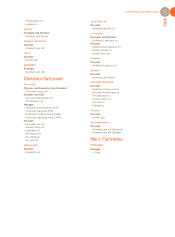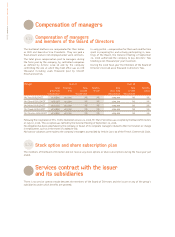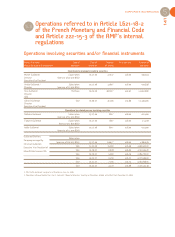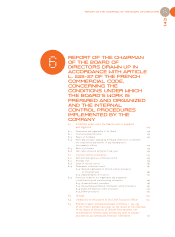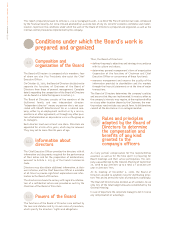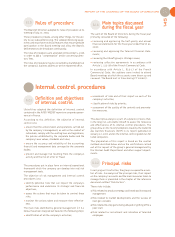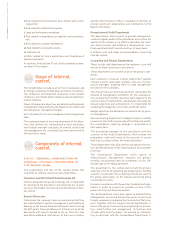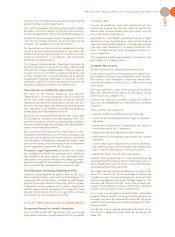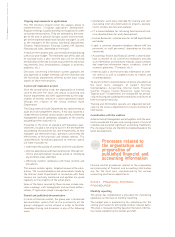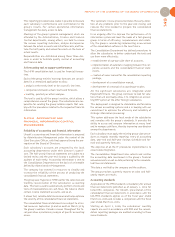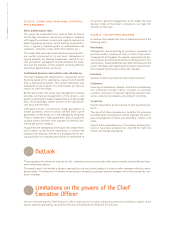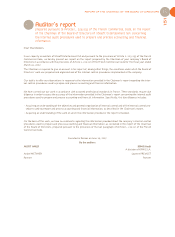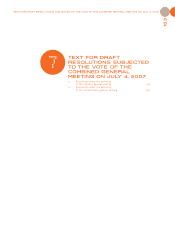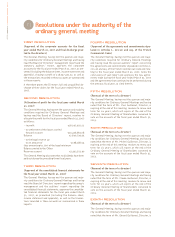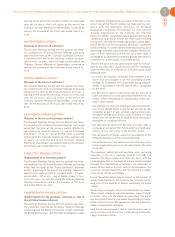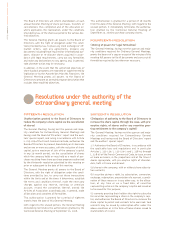Ubisoft 2006 Annual Report Download - page 158
Download and view the complete annual report
Please find page 158 of the 2006 Ubisoft annual report below. You can navigate through the pages in the report by either clicking on the pages listed below, or by using the keyword search tool below to find specific information within the annual report.
UBISOFT • FINANCIAL REPORT 2007
5Risk related to the termination of a contract with a licen-
sing partner
6Risk related to intellectual property
7Legal and arbitration proceedings
8Risk related to dependence on suppliers and subcontrac-
tors
9Risk related to customer dependence
10 Risk related to computer security
11 Financial risk
12 Risk related to future acquisitions and integration of
acquired companies
Accounting, financial and IT risk will be explained in grea-
ter detail in this report.
Scope of internal
control
The Ubisoft group is made up of 25 French companies and
32 foreign companies, broken down as follows: 20 distribu-
tion companies, 28 production companies, seven support
companies, one mobile phone company and one digital ani-
mation company.
Major strategies and objectives are determined by general
management (represented by the Board of Directors) and
the subsidiaries’ management bodies.
Each subsidiary has its own management and management
team.
The strategies aimed at ensuring attainment of the objec-
tives thus defined are implemented at each subsidiary,
even though oversight and audits of internal control and
risk management are centralized functions performed by
the head office teams.
Components of internal
control
6.2.4.1 General organization of
internal control procedures at
the group level
The organization and role of the various bodies that
contribute to internal control are described below:
Chairman and CEO Ubisoft Entertainment SA
Defines and guides the group’s strategy. He is responsible
for developing the procedures and resources put in place
to ensure the proper functioning and monitoring of inter-
nal control.
Board of Directors
Determines the company's policies and ensures that they
are implemented. It oversees management, particularly by
drawing up the annual financial statements and reviewing
the half-yearly financial statements. It has access to all the
documents and reports needed to do so. Directors may
also obtain additional information, at their own initiative,
and the Chief Executive Officer is available at all times to
provide significant explanations and information to the
Board of Directors.
Group Internal Audit Department
This department, which reports to general management,
conducts regular audits at the subsidiaries and verifies the
quality of the controls in an effort to formalize the inter-
nal control process and establish a framework for clari-
fying operational and financial practices at every level.
It analyzes risks and makes recommendations concerning
internal control.
Accounting and Finance Departments
These include staff departments that perform a two-fold
mission of expert assessment and control.
These departments are present at all of the group's com-
panies.
Each subsidiary’s Financial Control Department supplies
relevant numeric data (sales, margins, costs, etc.) to ope-
rations managers, enabling them to make management
decisions for the subsidiary.
The Group Financial Control Department coordinates the
network of management controllers for the subsidiaries,
sets up projected monthly reporting tools adapted to the
various levels of responsibility, and analyzes discrepancies
between objectives and achievements. It is responsible for
compiling the budget by cost center and profit center.
Budget objectives are defined on an annual basis by gene-
ral management.
Each Accounting Department manager prepares monthly
accounts on the ninth business day of the following month;
the consolidation reporting package is completed on a
half-yearly basis.
The accounting managers at the subsidiaries send the
accounts to the Audit Departments, which oversee the
preparation, audit and review of the accounts to ensure
that they accurately reflect the financial position.
These departments may also oversee and approve the ana-
lysis and formalization of the organizational and computer
processes.
The Consolidation Department, which reports to
Administrative Management, prepares the group’s
monthly consolidated financial statements on the 18th
business day of the following month.
This department is the central point of all the group’s
expertise in terms of preparing and analyzing the monthly
accounts. It publishes the accounting procedures used by
the group, particularly via the manual concerning group
accounting principles.
It ensures compliance with the existing standards and regu-
lations in order to present an accurate picture of the
group’s activity and financial position.
The Tax Department, which also reports to Administrative
Management, assists and advises the group’s French and
foreign companies in analyzing the tax aspects of their pro-
jects. Together with the various internal departments, it
ensures the group’s tax security by organizing risk preven-
tion, identification and management. Its function also
includes optimizing the group’s tax expense by collabora-
ting in particular with the Consolidation Department. It
6.2.3
6.2.4


